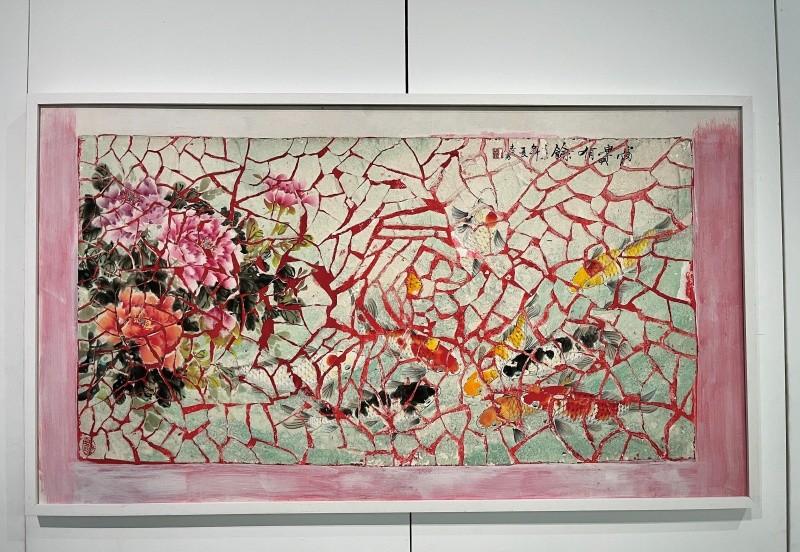
This painting "Rich and Rich" asked for 600 yuan before tearing it open
In this community residential building in the north of Guangzhou, the elevator will take you past several exhibitions interspersed with residential buildings, the top of which is part of the visual elements of the exhibition wall, and the basement floor stores the archives of the museum, which together make up the Guangdong Times Museum of Art.
Art is localized, and art and life are intertwined. Opened in 2010, the museum itself is a footnote to the special social, economic and cultural aspects of the Pearl River Delta, as well as an interesting stroke written by Guangzhou in the process of urbanization. This museum often invites artists to carry out open resident creations, breaking the convention of only presenting completed works, and the whole museum area gives people a touchable, vigorous and growing feeling.
When you arrive at the 19th floor exhibition hall, you will come to Yangjiang City, Guangdong Province, linhai in western Guangdong province in the 1990s , the Times Museum is holding the exhibition "In the Middle of the Street" by Yangjiang Youth, the entire exhibition area consists of a street spanning half of Yangjiang City, Yangjiang's architectural entities embedded in the exhibition hall, people wandering between streets, alleys and self-built houses, watching the artistic practice of Yangjiang and its surroundings from the 1990s to the beginning of the new millennium. These works come from the Yangjiang art youth in the 1990s, who formed the "Yangjiang Group" and created locally.
In addition to the exhibition area itself, the 19th floor of the residential building has a terrace overlooking the cityscape of Guangzhou and two glass galleries, as people walk through the Yangjiang River in the 1990s and Guangzhou in 2022.
At the entrance to the exhibition is a dense collection of calligraphy works, a calligraphy written on the front page of a miniature newspaper, the Southern Metropolis Daily around the new millennium, which records the vitality of Guangdong at the beginning of the 21st century. Calligraphy has always been the main line of creation of yangjiang combinations. As a paradigm of writing before the industrial age, calligraphy is regarded as art after it loses its practical value, and the intensity of reality brought about by participating in life has also faded along with its instrumental attributes.
A few more steps away, you'll be greeted by street clothing stalls and posters of the sale. The content is compact and fast-paced, and the exhibition area of the entrance will quickly bring people into the Yangjiang River at that time. As the exhibition introduces, "In the 1990s, the coastal city of Yangjiang in Guangdong was sandwiched between the old and the new, challenges and opportunities coexisted, and the new order brought about by the modernization process had a drastic transformation of daily life. ”
"Is it an ancient painting?"
Inside the museum, there was a white cloth more than ten meters long, and a pair of eyes looked and looked along the long marks on the white cloth. In fact, this is the graduation work of "Yangjiang Youth" Zeng Qingbai at the Guangzhou Academy of Fine Arts, who rubbed the trajectory of his bicycle on a white cloth of more than ten meters and hung the work directly on the outer wall of the library of the Guangzhou Academy of Fine Arts.
At that time, many students in the domestic academy of fine arts gave up The Su-style art education in their graduation works, but directly participated in the wave of artistic innovation. The domestic new art movement, which began in 1979 and originated from the people, had a direct impact on the students of the Academy of Fine Arts in the 1990s, when zeng Qingbai, a graduate of the university, used bicycle "rubbing" to explore the traditional definition of wide printmaking, which was also a new practice that directly responded to the external turmoil at that time.